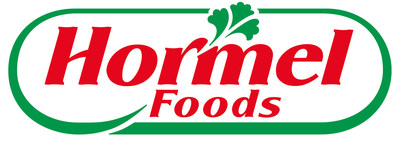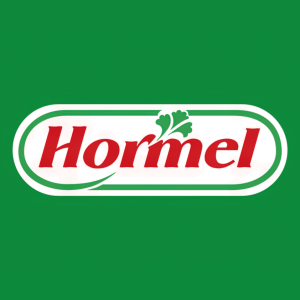Hormel Foods on Track to Match 100% of Domestic Energy Use with Renewable Sourcing by End of 2022
Hormel Foods Corporation (NYSE: HRL) announced it aims to match 100% of its domestic energy use with renewable sources by the end of 2022 as part of its 20 By 30 Challenge. This initiative includes multiple wind and solar energy projects, such as the Western Trails wind project in Texas and a solar array at the Jennie-O Turkey Store plant in Minnesota. Hormel's commitment to green energy aligns with the UN Sustainable Development Goals. The company has received accolades for its corporate responsibility and continues to focus on reducing its environmental footprint.
- Achieving 100% renewable energy for domestic use by end of 2022.
- Completion of significant renewable energy projects including notable wind and solar initiatives.
- Recognized for environmental stewardship and leadership in the green power market.
- None.
Wind and solar projects helping drive the company toward its 20 By 30 Challenge renewable energy goal
AUSTIN, Minn., April 21, 2022 /PRNewswire/ -- Hormel Foods Corporation (NYSE: HRL), a global branded food company well known for its corporate citizenship, is pleased to announce that it anticipates matching
"We are inspired to do our part to make the world a better place," said Mark Coffey, group vice president of supply chain for Hormel Foods. "This achievement demonstrates our commitment to environmental stewardship including rethinking how we source the energy we need."
In 2021, the company celebrated the launch of large-scale renewable energy projects, including:
- Western Trails wind project located in northern Texas;
- Caddo wind site in southern Oklahoma; and
- Haystack wind project located in eastern Nebraska.
In addition, the company completed its newest solar energy project at its Jennie-O Turkey Store plant in Montevideo, Minn. The 1.75-megawatt project, which hosts a community solar array, will provide approximately
"The U.S. Environmental Protection Agency applauds Hormel Foods for its leadership position in the green power marketplace," said James Critchfield, program manager of EPA's Green Power Partnership. "Hormel Foods is an excellent example for other organizations in reducing greenhouse gas emissions through green power investment and use."
Hormel Foods has been named one of America's Most Trustworthy Companies and one of America's Most Responsible Companies by Newsweek. The company has also been recognized as one of the World's Top Female-Friendly Companies by Forbes and has received several Impact Awards from Progressive Grocer for its educational support and food security programs.
The company's 20 By 30 Challenge goals follow its previous set of sustainability goals that Hormel Foods focused on as it achieved significant reductions in its packaging, nonrenewable energy use, greenhouse gas emissions, water use and solid waste sent to landfills.
More information about the company's efforts can be found at https://csr.hormelfoods.com/ and https://www.hormelfoods.com/responsibility/.
ABOUT HORMEL FOODS – INSPIRED PEOPLE. INSPIRED FOOD.™
Hormel Foods Corporation, based in Austin, Minn., is a global branded food company with over
FORWARD-LOOKING STATEMENTS
This news release contains "forward-looking" information within the meaning of the federal securities laws. The "forward-looking" information may include statements concerning the Company's outlook for the future as well as other statements of beliefs, future plans, strategies, or anticipated events and similar expressions concerning matters that are not historical facts. Such statements are subject to certain risks and uncertainties that could cause actual results to differ materially from historical results and those anticipated or projected, which factors include, but are not limited to, risks related to the deterioration of economic conditions; risks associated with acquisitions and divestitures; potential disruption of operations at co-manufacturers, suppliers, logistics providers, customers, or other third-party service providers; risk of loss of a material contract; the Company's inability to protect information technology systems against, or effectively respond to, cyber attacks or security breaches; deterioration of labor relations, labor availability or increases to labor costs; general risks of the food industry, fluctuations in commodity prices and availability of raw materials and other inputs; fluctuations in market demand for the Company's products; risks of litigation; potential sanctions and compliance costs arising from government regulation; compliance with stringent environmental regulation and potential environmental litigation; and risks arising from the Company's foreign operations. Please refer to the cautionary statements regarding "Risk Factors" and "Forward-Looking Statements" that appear in our most recent Annual Report on Form 10-K and Quarterly reports on Form 10-Q, which can be accessed at hormelfoods.com in the "Investors" section, for additional information. In making these statements, the Company is not undertaking, and specifically declines to undertake, any obligation to address or update each or any factor in future filings or communications regarding the Company's business or results. Though the Company has attempted to list comprehensively these important cautionary risk factors, the Company wishes to caution investors and others that other factors may in the future prove to be important in affecting the Company's business or results. The Company cautions readers not to place undue reliance on forward-looking statements, which represent current views as of the date made.
Contact: Dean Peters
507-434-6352
media@hormel.com
![]() View original content to download multimedia:https://www.prnewswire.com/news-releases/hormel-foods-on-track-to-match-100-of-domestic-energy-use-with-renewable-sourcing-by-end-of-2022-301530426.html
View original content to download multimedia:https://www.prnewswire.com/news-releases/hormel-foods-on-track-to-match-100-of-domestic-energy-use-with-renewable-sourcing-by-end-of-2022-301530426.html
SOURCE Hormel Foods Corporation
FAQ
What is Hormel Foods' renewable energy goal for 2022?
What projects are contributing to Hormel Foods' renewable energy targets?
How does Hormel Foods support the UN Sustainable Development Goals?








